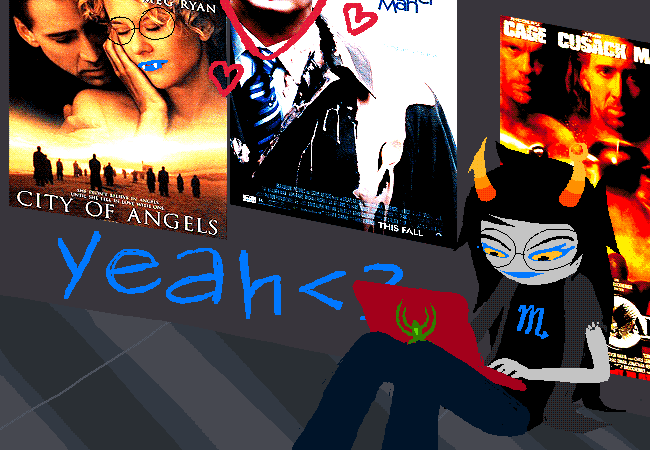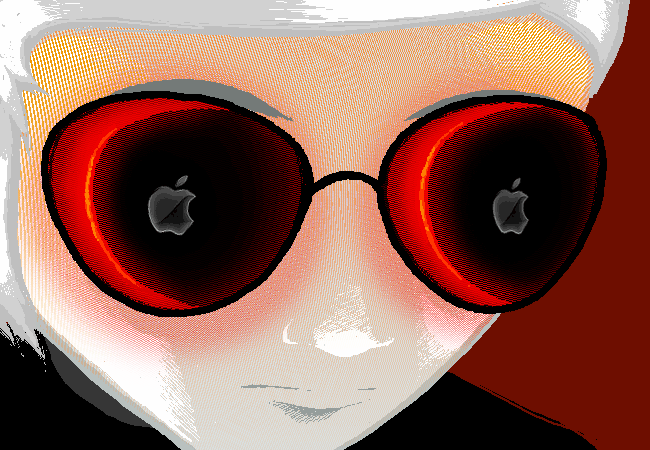Kuurion introduced me to Homestuck about the same time he wrote our original review for it. That was in June of 2012, and at the time I believed that I would have caught up with the story in about a month. At this point, having read literally thousands of pages and seen dozens of animations, I don't think I'll ever finish it. The story creator Andrew Hussie is telling moves too fast and has too many intricate parts for me to follow anymore. Half the purpose of this review is to apologize to Kuurion and let him know his favorite webcomic has bested me in fair combat.
Homestuck starts with a premise that is deceptively simple. Structured like a text-driven video game, Homestuck introduces you on its first page to an unnamed boy who has just had his thirteenth birthday, and suggests you name him. The reader doesn't actually have any control here, though; when the comic prompts you for something, it's almost like it's talking over your shoulder to someone you can't see. This gets the reader into the habit of ignoring the omnipresent second person structure - though, in appropriately surrealist fashion, it becomes important later. Or at least that's what I think happened.
The comic grows complex quickly, something that caught me off guard because the dialogue is so disarmingly simple. Our protagonist, now named John Egbert, lives a strangely insular life that seems to consist exclusively of talking with his friends Rose, Dave and Jade through an IM client. The story, while nominally a comic pretending to be a video game, is actually conducted largely through huge blocks of IM chat that appear as text beneath the picture part of the comic on most pages. Overshadowing this already complex set of proceedings is the fact that the apocalypse is about to start, and also John has just become the client player in a real-world video game called Sburb.
In fact, each of the four kids is either the server or client to another, allowing them to daisy-chain the control structure. The server player is actually more in control than the client, who appears on their screen - like a video game. What does the client player do? He or she fights imps, which have suddenly appeared and produce useful materials like "build grist" when defeated. The player can use grist and other materials to make things using a trio of confusing machines: the cruxtruder, the totem lathe, and the alchemiter. As the game's second person narration cheekily points out, you'll never have quite enough material to make the thing you want.
If you're not excited by this premise yet, then truthfully I've done something wrong. Homestuck is a masterpiece that will rope you in and hold you for a very, very long time. But it lost me and, try as I might, I can't get the magic back. Hussie shares Stephen King's gift for making the improbable a little too acceptable. The comic starts so far outside the realm of plausibility that it's actually managed to lap the readers by the time they've adjusted their expectations. In addition to the stories of the children, we're introduced to a number of side characters - starting with the Wayward Vagabond, an imp living in a desert in an unspecified time and place.
Once we've wrapped our heads around him, we're introduced to the trolls who are heckling the kids through IM. Except that they are literally trolls, who live on a planet in another universe and created our universe through a game of their own called Sgrub. Then we're introduced to a set of characters called the Midnight Crew in an "Intermission" segment that actually loops around the have direct bearing on the plot. Or maybe those two segments happen the other way around; for the purpose of this review, it doesn't really matter.
There's a pattern that repeats here: the stage keeps getting larger. We get to know the ground rules of the universe through John, and then we meet his three friends. Then we zoom out and meet the Wayward Vagabond, who becomes the first of several "wanderer" characters. Then we zoom out and meet the trolls who made John's universe. Then we go to a second universe, at which point the story breaks into two parallel lines and I gave up. Again, this is literally thousands of pages in, and still with no end in sight.
There are a lot of kind things that can be said about Homestuck, but since they've all already been said, I'd rather give voice to my own, slightly less kind thoughts. While I will openly and honestly say that Homestuck is a rare and significant cultural work, it's also susceptible to diminishing returns. I had loads more fun reading the story at the beginning before it become bogged down under accumulated internal mythology and story lines. There's just too much going on here, and I stopped reading because it stopped being fun to read.





No comments:
Post a Comment